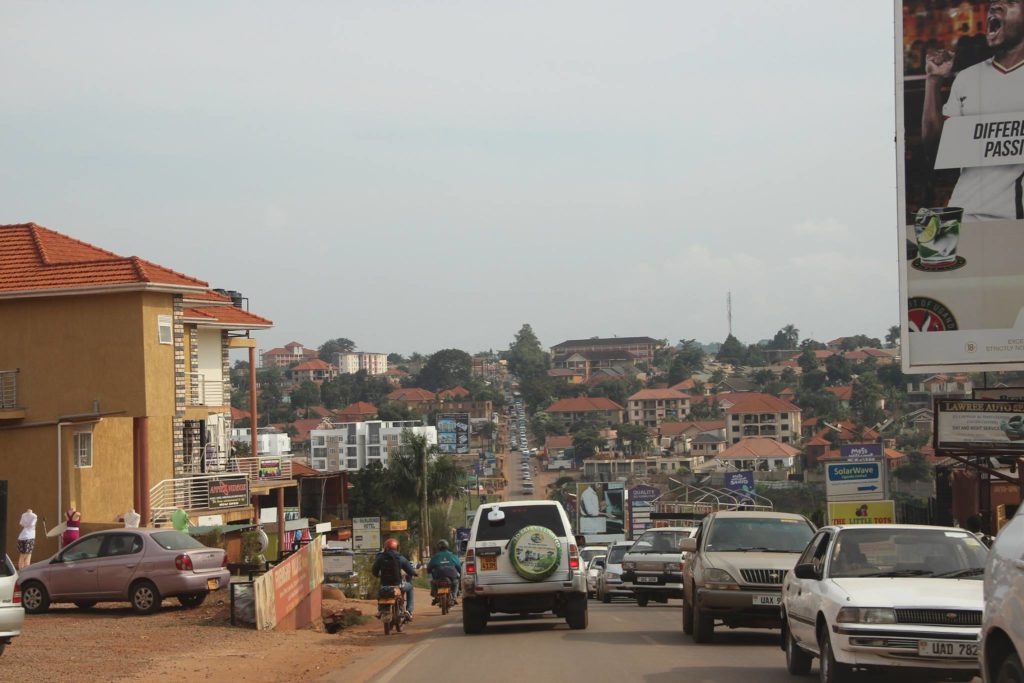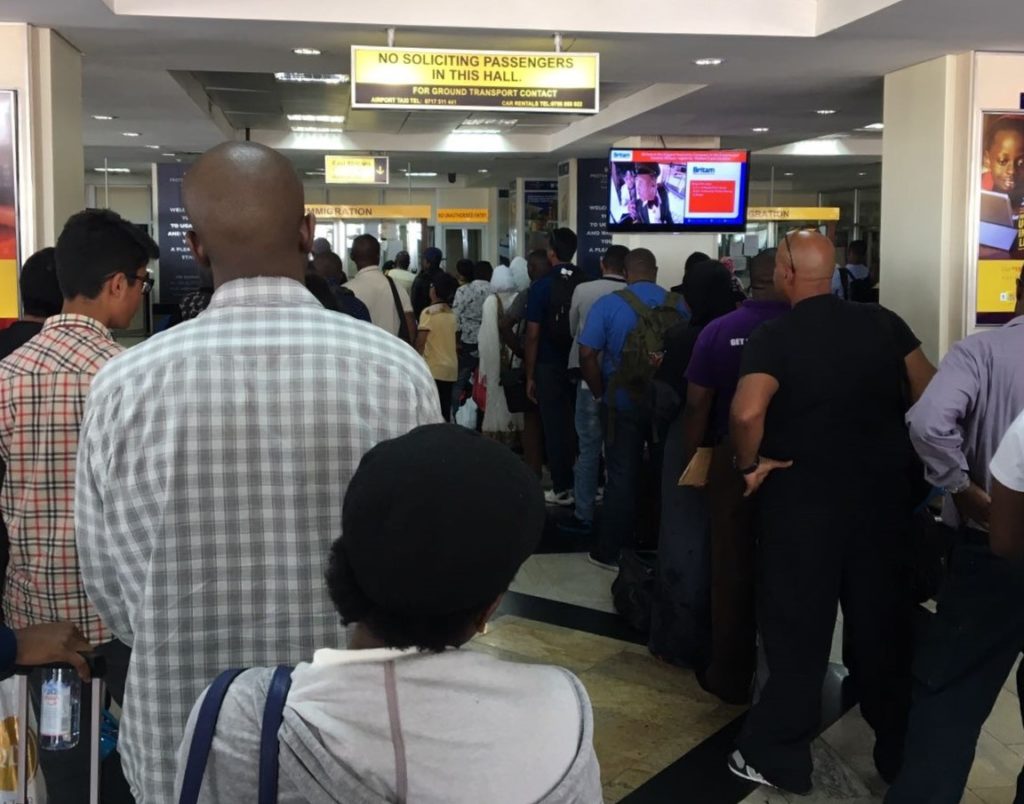Category
Travels
A roadtrip through Africa: Uganda part 4 – Southern Province
“It is in our hands to create a better world for all who live in it”
Nelson Mandela
Having already travelled across 2/3 of Uganda, it was now the turn for some days in the Southern Province.
First destination was Mbarara, with its 200,000 population, one of the industrial hearts of Uganda. It didn’t bring us much luck since, as soon as we reach, our car broke down for the first time. After waiting for several hours by a gas station in the suburbs, we were ready to hit the road again.
In the Southern region we came across one among the most affected regions affected by climate change in the world. The farmers’ local community showed us old photos and took us accross the old jungle. What once was a green and wet area, full with tropical crops, like coffe, bananas and pineapples, in the past few years, since a 80% drop in rainfall, has become a golden and dry phantom area.
After a three-day visit of the countryside, we agreed, with the CAO of Isingiro, to study a develop a macro water collecting and management system to be funded by FAO and World Bank.
Every 200 Ha of arable land a water collection basin will be created, large enough to satisfy the water needs for agriculture and livestock needs during the dry season. Depending on the quantity and the area, water will be taken from rain, boreholes, rivers and lakes. From the water basins, shared pumping stations will feed a network of underground pipelines and modern irrigation systems.
Next stop: Kampala for Government meetings!

Visiting some banana plantations near Isingiro 
Visiting some banana plantations near Isingiro 
On field inspections 
On field inspections 
On field inspections 
Meeting with CAO of Isingiro 
On the road to Isingiro
A roadtrip through Africa: Uganda part 3 – Eastern Province
– Jeffrey Gettleman, Love, Africa: A Memoir of Romance, War and Survival
“First comes Coke, then asphalt, then power lines, then maybe education, justice, and human rights.”
After a few days in Kampala, it was time for me to jump on the car and start my work in the countryside.
Everytime I begin a new trip in Africa I always have that thrill, that addictive feeling of new adventure and that day it was exactly like this.
Of course, it wasn’t my first trip on the road but, in some places of the world, you know, life can still suprise you everyday and you never know what to expect when you wake up in the morning.
My first destination was Soroti, in the Eastern Province where, after some visits to local farms, I had to meet the famers community. Looking at the maps I saw the distance: 295 km and I started to guess about the duration of the trip. As always, I was too optimistic since it took almost 10 h.
At least I had time to do some sightseeing on the road. In Jinja I got to see the Source of the Nile and crossed it. Crossing the Nile is a state of mind, your thoughts immediately go to the depth and lenght of its travel through Africa, its relentless flow marks the unchanging run of time.
At 10pm I finally arrived at my hotel in Soroti.

Gandhi’s bust in Jinja 
The Source of the Nile 
On the road through Sugarcane 
People walking along the road
The following day, after a restful night, I drove to Serere to meet the CAO (the mayor, not elected but nominated by the Government) and join the local farmers community for an open class on the importance of irrigation for modern farming.
During the day I had the opportunity to talk with dozens of small and medium scale farmers (mainly rice and banana growers), worried about the effects of global warming and climate change. We discussed a lot about the issues of running an agricultural business in Uganda and I saw that problems are pretty similar everywhere in the world, Europe, America, Asia and Africa.
Undoubtedly, in the past years, quality of life has been improving in almost any part of Africa (of course not in those countries that are at war, like South Sudan, I hope to have time to write about South Sudan as well), therefore food consumption is growing and changing.
Meat is replacing traditional recipes based on corn and rice, like ugali (the equivalent of polenta in italian cuisine).
Although all these “improvements” in the macroeconomic indices, the situation, especially in the countryside and for small and medium scale farmers, remains very fragile. A few factors are restricting the development of rural areas (and this applies not only to Uganda or Serere, but to all African countries):
- Access to credit. In Africa it is almost impossible to get project financing, especially for small scale investments. In place of giving away things for free why don’t the NGO use their money to finance (without interest) small projects? It would help to inject liquidity and to make young entrepreneurs responsible for their projects.
- Lack of technical training (regardless of the field of work). A small example, related to my work. In Africa it is very difficult to find fruit and vegetables out of season because farmers don’t have the knowledge to grow off-seasonly.
- Lack of infrastructure, which destroyes the development of the internal market.
- Lack of market study. Many times African companies only compete on best price, without giving importance to service and/or quality of products. They simply loweri their prices dangerously. Since they kill their margins, they kill their ability and possibility to make investments in the future.
A roadtrip through Africa: Uganda part 2 – Kampala
Rule number 1: when someone, in Africa, says “don’t worry” don’t, for any reason, trust him. Be aware that a catastrophy will eventually occur.
When we got in the car to Kampala, I was warned that thre 45 km drive, thanks to the new motorway built by the Chinese Government (we’ll talk about this in the future), could last no more than 1 hour. By my side, after all the flights and useless waits, that was extraordinary good news.
My optimism was definetely misplaced, tough. As soon as we went out from the security area of the airport, we had to face the Kampala traffic., which is something that you can’t believe, imagine and forget. It took us almost 5 hours from Entebbe to Africana hotel, near the city center.
In the following days, I realized it’s pretty common, also due to blackouts (not so infrequent) or thunderstorms, to spend almost half a day in the traffic because everybody gets stucked (I don’ know the reason).

A few facts about Kampala
Unlike other countries in Africa, density population in Uganda is quite high (160 inhabitants per square km) and this this influences many aspects of every day life (driving and moving is almost impossible).
Kampala is the biggest city in Uganda and is said to have 1,5 million inhabitants, but other estimates affirm there are even more than 3 millions people living in the city center and in the suburbs.
The city is famous because it was built by the British putting together different settlements on hills stretching along Lake Victoria (originally there were seven hills but now, since the population is growing, the number is more than double).
Just like all the other capitals built during the British colonialism, there are no squares (a square is needed only in democracy), therefore all markets, social life etc happen along (or in the middle) the streets.
Kampala is a complex mix of different cultures, ethnicities, cultures and religions. There are lots of places of worship (Anglican and Catholic churches, mosques and Bahai and Hindu temples). For Christians, the most famous and important place is Munyonyo Martyrs Shrine, where, between 1885 and 1887, 12 Catholic and 13 Anglican converts were executed.

The Bahai temple in Kampala 
The hills of Kampala 
Catholic presence in Kampala 
The memorial plaque for the martyrs
Eating in Kampala
Since it is an international city, it is not difficult to find the desired type of restaurant, cafe and fast food (the most important ones are inside the shopping malls). However, if you want to visit a very special local place with traditional cuisine you must absolutely try “Africa Hot Pot”.
END OF PART 2
A roadtrip through Africa: Uganda part 1 – Arrival in Kampala
Sometimes life just passes by and sometimes you get calls you do not expect.
May 2017
For that occasion, on the other end of the phone there was H. E. Grace Akello, the Ugandan Ambassador to Italy (she is currently in India).
Even if I didn’t know how she managed to get my mobile number, she invited me in Rome to discuss about a project in Uganda. Obviously, since I never had the opportunity to visit the “Pearl of Africa” country (we shall discuss about this motto in the future), I immediately agreed.
One week later I was in her office in Rome, she explained me that the Government of Uganda was in search of partnerships with European private companies for the development of the agriculture sector and she wanted me to visit Uganda in the upcoming summer.
July 2017
After 24h flight from Milano to Doha and from Doha to Kampala (including 10h stop in Qatar), I finally landed at Entebbe airport (it should be the only international airport in Uganda).
I was so happy with my special VISA that I thought I could be out in a couple of minutes. I was wrong.
Some funny facts from my 5h wait at the immigration office of Entebbe airport:
- a guy from Ethiopia started to shout against some policemen and tried to take their weapons. The result? In 5 minutes they sent the special forces from the army.
- a 5 members family (again from Ethiopia), who was just before me for the security controls lost all their documents (ID, passports etc) and they were immediately classified as terrorists (even if nobody knows the exact definition for this word). The result? Even more special forces.
- as common to a lot of other countries, the custom control is where they check if you did not steal someone else’s luggage, nobody really cares about what you take with you.

Security controls – Entebbe International Airport
So, after several queues of people (one for passport control, one to change some money, one to buy a local sim card, one for baggage inspection etc), I was finally able to meet my local guides: Robert and Foster.
Robert works for the Youth Development Program, Foster for the ideology and communication of the government. They both had to take me on tour through their country, show me the actual situation of the agriculture in Uganda and introduce me to local farmers.
END OF PART 1














